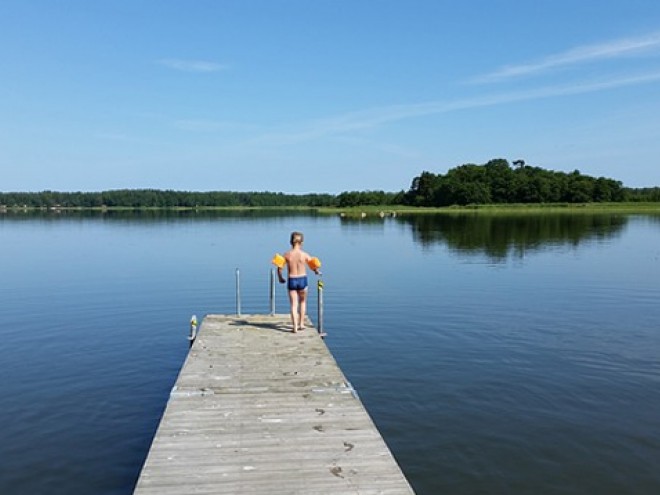Earlier this week, Barbara Stark-Nemon wrote about how her family chose to remember Germany after World War II. She is the author of the recently published novel Even in Darkness. She will be blogging here all week for Jewish Book Council’s Visiting Scribe series.
 There’s a special meadow in the forest of novelists who integrate the visual arts into their work. In Even in Darkness, there are four distinct scenes involving paintings or sculptures that produce transformational moments for the main characters. As a photographer, sketch and fiber artist, and art history student, I’ve long been attracted to the visual arts. Over time, I’ve come to realize how much that interest informs my writing.
There’s a special meadow in the forest of novelists who integrate the visual arts into their work. In Even in Darkness, there are four distinct scenes involving paintings or sculptures that produce transformational moments for the main characters. As a photographer, sketch and fiber artist, and art history student, I’ve long been attracted to the visual arts. Over time, I’ve come to realize how much that interest informs my writing.
When I first began work on the manuscript that became Even in Darkness, I had the good fortune to attend a weeklong writer’s workshop with Elizabeth Kostova, whose novel Swan Thieves has artists as main characters. All week, the workshop experimented with various approaches to including visual arts in our work, and I came away with two of the scenes that remain in Even in Darkness today.
Since this novel is primarily based on the life of my great aunt, some of the works of art that appear in it are ones she owned, or saw and spoke about, and I admired them or learned about them when I visited her in Germany. Lithographs by Marc Chagall lined the marble-floored entry hall of the rectory where she lived, and the priest she lived with wrote a book about kings and prophets in Chagall’s art. A watercolor, by a little-known German Expressionist artist, hung on their dining room wall, and my aunt told me the story of how it represented her need to restore her capacity to see beauty after all she’d suffered during the war. An oil portrait of my great aunt graced a wall in the priest’s study. It made its way into Even in Darkness. When I walked the Via Dolorosa in Jerusalem, as my aunt and the priest once did, I imagined how her seeing a sculptural relief of St. Mary might have made her feel, as a grieving mother. I incorporated this scene into a chapter that catalyzed spiritual and emotional insights of Klare’s character for the reader.
Other art connections showed up in the book. On a research trip to an exhibit of German art rejected by the Nazis in the 1930s, I saw several portraits of the art dealer Johanna Ey, and I learned about the artists she aided. She became the basis of a character.
I recently had the opportunity to visit the Museo de Picasso in Malaga, Spain, which houses an interesting collection of Picasso’s works spanning his whole career. A description of one of his mid-career portraits included a quotation by the photographer Roberto Otero that struck me as fundamentally true not only about drawing, but about writing.
“Of course, one never knows what’s going to come out, but as soon as the drawing gets underway, a story or idea is born. And that’s it. Then the story grows…and the drawing is turned into other drawings — a real novel.”
When I write, I feel like I draw a character’s portrait in words and then the picture is begun. It grows, and other pictures emerge and the images join into a whole. Otero’s observation reminds me how closely the creative process is mirrored in visual and written forms and how I delight in that. As Alyson Richman says in an interview on the wonderful website by Stephanie Renee dos Santos about art in historical novels, “I feel as though I’ve been able to incorporate my love of art with my love of writing.”
Every story needs a narrator, and Barbara Stark-Nemon stepped up early in life. She learned a fascination with the magic of language from her storytelling grandfather. An undergraduate degree in English literature and art history and a master’s degree in speech-language pathology from the University of Michigan led Stark-Nemon to a career in schools, universities, and hospitals. As a teacher and speech-language therapist, Barbara specialized in child language disorder and deafness; everywhere, there were stories, and the need to be heard and seen that we all share. Today Stark-Nemon writes novels and family histories while gardening, cycling, and creating fiber art in Ann Arbor and Northport, Michigan.
Related Content:
- Essays: An Artistic Eye
- How Far Would You Go For Your Passion? by Lisa Barr
- Reading List: Chagall


